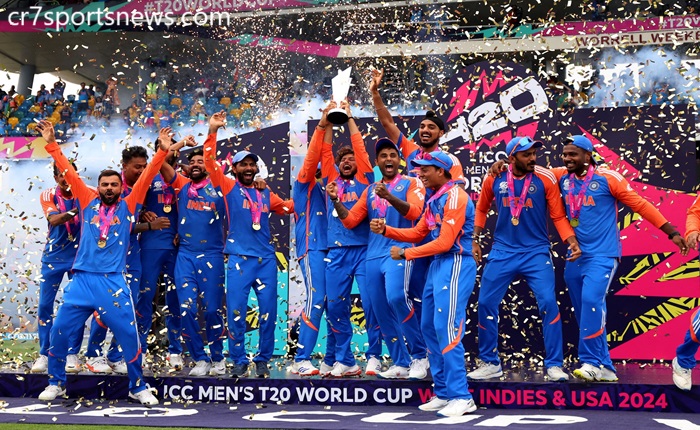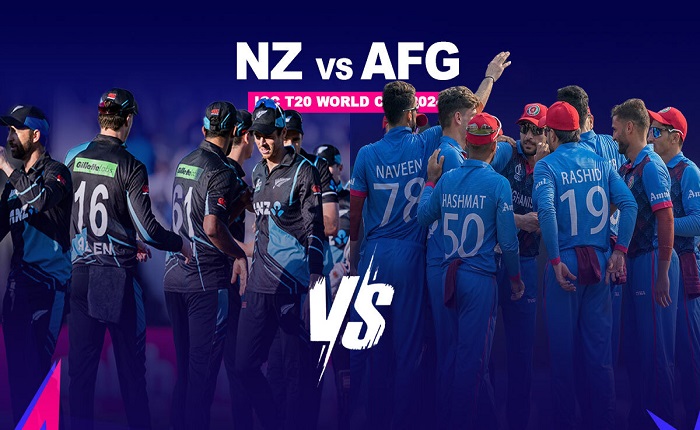Cricket World Cup: A Comprehensive Overview of the Biggest Tournament in International Cricket

The Cricket World Cup is the most prestigious tournament in the world of cricket, held every four years and governed by the International Cricket Council (ICC). It brings together the top cricketing nations to compete for the title of world champion. The tournament’s history dates back to 1975, and over the years, it has grown into a global spectacle that captivates millions of cricket fans worldwide. The Cricket World Cup is known for its high-stakes matches, unforgettable moments, and the fierce competition between cricketing giants.
Every Cricket World Cup features a blend of established teams and emerging cricket nations, making it a truly global event. The tournament serves as a platform for players to showcase their talent on the biggest stage. Whether you’re a cricket fanatic or a casual viewer, the Cricket World Cup provides unparalleled excitement and drama. From the very first ball to the final over, the intensity of each match is palpable, making it one of the most anticipated sporting events in the world.
History of the Cricket World Cup
The Cricket World Cup was first held in 1975, and since then, it has evolved into one of the most significant sporting events globally. The inaugural Cricket World Cup was held in England and featured only eight teams. West Indies emerged victorious in that first tournament, setting the stage for a legacy that continues to this day. Over the years, the tournament has expanded to include more teams, more matches, and more excitement.
Each edition of the Cricket World Cup has its own story, with moments of brilliance and heartbreak. The tournament has seen dominant teams like Australia and West Indies, but it has also provided the stage for underdog stories, like Sri Lanka’s stunning win in 1996. As the Cricket World Cup progressed, the format changed several times, incorporating new ideas to ensure the tournament remains competitive and engaging for audiences.
Significance of the Cricket World Cup
The Cricket World Cup is more than just a tournament; it is a celebration of the sport of cricket. Winning the Cricket World Cup is the pinnacle of achievement for any cricketing nation, and the tournament’s global reach ensures that it transcends geographical boundaries. Nations that win the Cricket World Cup earn not only the trophy but also a place in the annals of cricketing history. For players, it is the ultimate dream to lift the World Cup, as it signifies reaching the zenith of their careers.
Fans from across the globe come together to celebrate the Cricket World Cup, and the tournament becomes a cultural phenomenon. National pride, fervor, and passion run high as countries rally behind their teams. The Cricket World Cup unites people and brings together cultures, making it one of the most significant global sporting events.
Format of the Cricket World Cup
The format of the Cricket World Cup has changed over the years, adapting to the growing popularity and competitiveness of the sport. In the early editions, only a few teams participated, but as cricket expanded to new regions, the number of teams in the Cricket World Cup increased. Currently, the tournament follows a round-robin format, where every team plays against each other, and the top teams advance to the knockout stages.
The Cricket World Cup also features a combination of league matches and knockout stages, ensuring that teams must perform consistently throughout the tournament to reach the final. The format guarantees that the Cricket World Cup remains competitive and that the best team ultimately wins the prestigious trophy. This format has been praised for creating some of the most thrilling moments in the history of the tournament.
Teams in the Cricket World Cup
The Cricket World Cup attracts the top cricketing nations from around the world. Traditional powerhouses like Australia, India, England, and Pakistan are regular participants, but the tournament also provides opportunities for emerging cricket nations like Afghanistan and Bangladesh to make their mark on the global stage. Each edition of the Cricket World Cup features a diverse range of teams, each with its unique style and strategy.
The diversity of teams in the Cricket World Cup ensures that the tournament is unpredictable and exciting. While established teams have historically dominated the competition, upsets are always possible, as seen in various editions of the tournament. The Cricket World Cup is a true test of skill, teamwork, and endurance, and every team has a shot at glory.
Memorable Moments in Cricket World Cup History
The Cricket World Cup has produced countless memorable moments that have become etched in the minds of fans worldwide. From individual brilliance to team heroics, the tournament has seen it all. Who can forget Kapil Dev’s famous catch in 1983 that helped India clinch their first-ever Cricket World Cup? Or the unforgettable final in 2019, when England won the Cricket World Cup by the narrowest of margins, defeating New Zealand in a dramatic super over?
These moments define the Cricket World Cup and showcase the unpredictable nature of the tournament. Every edition brings new stars and new stories, making it an event that fans look forward to with anticipation. The Cricket World Cup has a rich history of unforgettable matches and performances that will continue to inspire future generations of cricketers.
Impact of the Cricket World Cup on Cricket
The Cricket World Cup has a profound impact on the development of cricket worldwide. The tournament not only boosts the popularity of the sport in traditional cricketing nations but also helps to promote the game in countries where cricket is still developing. Many players who shine in the Cricket World Cup go on to become global superstars, inspiring a new generation of cricketers.
The Cricket World Cup also serves as a platform for innovation in the sport. From new strategies to advances in technology, the tournament often sets trends that influence the way cricket is played. The use of the Decision Review System (DRS) and other technological advancements have been widely adopted in cricket after their introduction in the Cricket World Cup.
The Role of Captains in the Cricket World Cup
Captains play a crucial role in the success of their teams in the Cricket World Cup. The pressure of leading a team in the tournament is immense, and captains must make quick decisions that can determine the outcome of matches. Successful captains like Clive Lloyd, Kapil Dev, and Ricky Ponting have left their mark on the Cricket World Cup, guiding their teams to victory through their leadership and tactical acumen.
A good captain can inspire their team to perform beyond expectations, while poor leadership can result in a team’s downfall. The Cricket World Cup is as much a test of mental strength as it is of cricketing ability, and captains who can handle the pressure often lead their teams to success.
Venues of the Cricket World Cup
The Cricket World Cup is held in various cricketing nations, and the venues play a significant role in the tournament’s success. Iconic stadiums like Lord’s in England, the Melbourne Cricket Ground in Australia, and Eden Gardens in India have hosted some of the most memorable matches in the tournament’s history. These venues are not just places where matches are played; they are hallowed grounds where history is made.
Each host country puts its unique stamp on the Cricket World Cup, from the atmosphere in the stands to the conditions on the pitch. The venues are an integral part of the Cricket World Cup experience, and they add to the excitement and drama of the tournament.
Fans and the Cricket World Cup
The Cricket World Cup is incomplete without the passionate support of fans from around the world. Whether it’s the sea of blue cheering for India or the vibrant yellow of Australian supporters, fans bring the tournament to life. The Cricket World Cup unites people from diverse cultures and backgrounds, all brought together by their love for cricket.
Fans not only create an electrifying atmosphere in the stadiums but also play a crucial role in building the global community of cricket lovers. The Cricket World Cup fosters a sense of belonging, and the memories created during the tournament are cherished by fans for years to come.
Media and Coverage of the Cricket World Cup
The Cricket World Cup receives extensive media coverage, with broadcasters, journalists, and digital platforms all playing a part in bringing the tournament to fans worldwide. From live broadcasts to expert analysis, the media plays a crucial role in keeping fans engaged throughout the Cricket World Cup. Social media platforms have further amplified this engagement, allowing fans to share their thoughts and opinions on matches in real time.
The global coverage of the Cricket World Cup ensures that even fans who cannot attend the matches in person can still experience the excitement and drama of the tournament. The media’s role in promoting the Cricket World Cup has helped it grow into a global sporting phenomenon.
Conclusion
The Cricket World Cup remains the pinnacle of international cricket, offering fans a blend of competition, drama, and unforgettable moments. With its rich history, global reach, and impact on the sport, the Cricket World Cup is more than just a tournament – it is a celebration of cricket itself. As the tournament continues to evolve, it will undoubtedly remain a key event in the sporting calendar, uniting cricket lovers from all corners of the globe.
FAQs
1. How often is the Cricket World Cup held?
The Cricket World Cup is held every four years.
2. Which country has won the most Cricket World Cups?
Australia holds the record with five Cricket World Cup titles.
3. When was the first Cricket World Cup played?
The first Cricket World Cup was played in 1975.
4. How many teams participate in the Cricket World Cup?
The number of teams has varied over the years, but currently, 10 teams compete in the tournament.
5. What is the format of the Cricket World Cup?
The Cricket World Cup follows a round-robin format, with the top teams advancing to the knockout stages.





